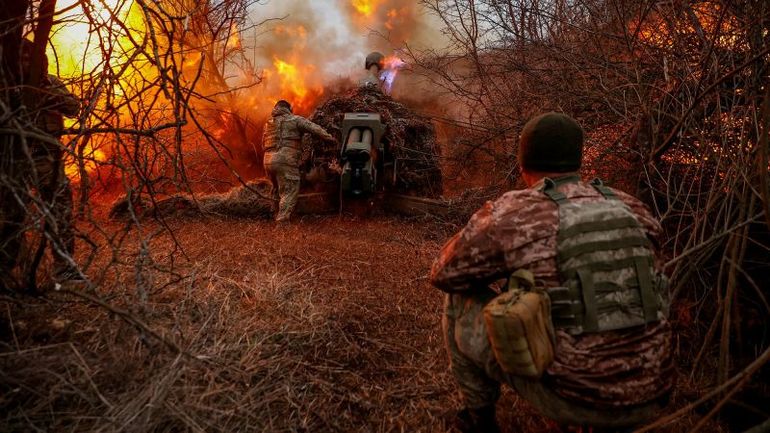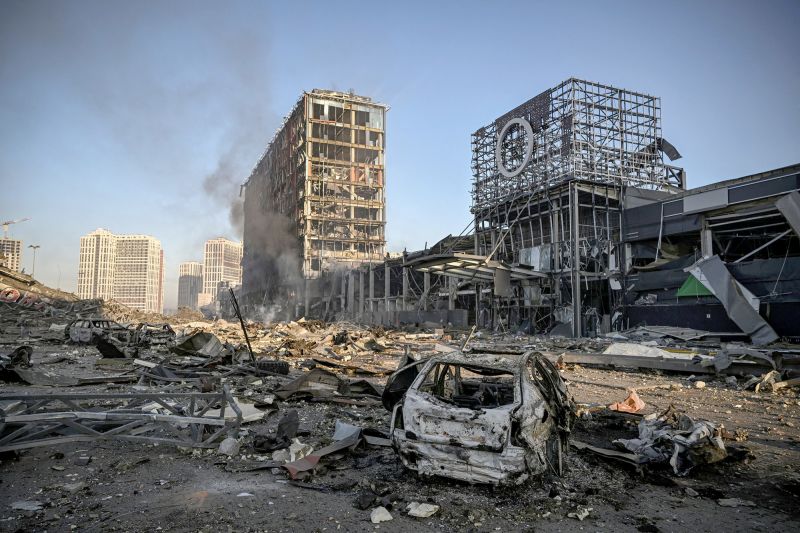
EU's Plan to Support Ukraine: Utilizing $3 Billion from Frozen Russian Assets

European Union leaders are mulling over a strategy to allocate approximately $3 billion annually from seized Russian assets to bolster Ukraine's military efforts in the ongoing conflict.
European Union leaders are discussing a new idea to support Ukraine's war effort. They are thinking about using approximately $3 billion per year from frozen Russian assets. The European Commission will bring up this proposal at an upcoming summit of EU heads of government.
As he arrived at the meeting, German Chancellor Olaf Scholz expressed his confidence that fellow European leaders would come to an agreement on the plan.
Speaking to reporters, he emphasized the importance of using the profits to acquire the weapons and ammunition necessary for Ukraine's defense.
A senior EU official revealed that the latest proposal is more extensive than a previous plan from late 2023. This earlier plan was agreed upon in principle last month and aimed to utilize interest payments and profits from accounts in Brussels to aid in the reconstruction of the war-torn country.
The official shared that there is a growing majority of European countries advocating for these funds to be allocated to the European Peace Facility. This facility, established in 2021, supports the financing of the EU's defense and military initiatives globally. Unlike the general EU budget, funds from the facility can be used for purchasing arms.
"The EU plan in December focused on reconstruction and providing financial support to the government in Kiev. Now, with the situation becoming more critical, the delivery of weapons is seen as even more crucial," explained the official.
In recent months, there has been growing pressure on EU states to increase their military support for Ukraine. This is due to the slowing flow of aid from the United States and Russia's advancements on the battlefield.
The US Senate passed a bill last month to provide $60 billion in military aid to Ukraine. However, House Speaker Mike Johnson blocked it from being voted on.
The goal is to hold Russia accountable.
After Russia's invasion of Ukraine in February 2022, Western countries froze almost half of Moscow's foreign reserves, totaling around €300 billion ($327 billion). The majority of these funds, approximately €200 billion ($218 billion), are held in the EU, mainly at Euroclear, a financial institution that safeguards assets for banks, exchanges, and investors.
Euroclear is currently seeing a significant increase in cash holdings due to various payments linked to the frozen Russian assets. These payments include interest payments on bonds, also known as coupons, as well as the proceeds from securities that mature and are subsequently reinvested.
Last month, the group announced that they made €5.2 billion ($5.6 billion) in interest from income generated by Russian assets that were frozen by the EU and Group of Seven countries in 2022.
TOPSHOT - Smoke billows after a Russian attack on the Retroville shopping mall abd residential district of Kyiv on March 21, 2022. - At least six people were killed in the overnight bombing of a shopping centre in the Ukrainian capital Kyiv, an AFP journalist said, with rescuers combing the wreckage for other victims. (Photo by ARIS MESSINIS / AFP) (Photo by ARIS MESSINIS/AFP via Getty Images)
Smoke can be seen billowing after a Russian attack on the Retroville shopping mall and residential district of Kyiv on March 21, 2022. At least six people lost their lives in the overnight bombing of a shopping center in the Ukrainian capital Kyiv, as reported by an AFP journalist. Rescue teams are currently searching through the debris for any other potential victims. The photo was taken by ARIS MESSINIS and is credited to AFP/Getty Images.
Related article
Russia’s frozen assets are generating billions. The EU is getting ready to send them to Ukraine
The European Commission is proposing to use a special levy to collect windfall interest income on frozen Russian assets. EU foreign policy chief Josep Borrell estimates that this initiative could generate around €3 billion ($3.3 billion) annually.
Borrell expressed his hope for a prompt agreement on this proposal during a press conference in Brussels. He emphasized the need to convert banknotes into weapons, as soldiers require physical arms and instruments to defend their people.
The EU and its allies are committed to holding Russia accountable for contributing to the massive cost of rebuilding Ukraine. Official figures released by the Commission in February put the estimated bill at $486 billion over the next ten years.
According to Ukrainian authorities, the country is expected to require approximately $15 billion this year to reconstruct energy and transportation infrastructure, housing, and other essential priorities.
The EU has approved a €5 billion ($5.5 billion) increase for the European Peace Facility. This money will be set aside in a special fund called the Ukraine Assistance Fund to help with the country's military requirements.
Reporting for this update was provided by James Frater and Benjamin Brown.
Editor's P/S:
The European Union's plan to support Ukraine's war effort by utilizing frozen Russian assets is a significant step towards holding Russia accountable for its aggression. The proposal to use approximately $3 billion annually from these frozen assets demonstrates the EU's commitment to providing Ukraine with the necessary resources to defend itself. By allocating these funds to the European Peace Facility, the EU aims to ensure that Ukraine has access to the weapons and ammunition it needs to repel Russian forces.
The growing pressure on EU states to increase their military support for Ukraine highlights the urgency of the situation. With the United States facing challenges in providing sufficient aid, the EU's initiative is vital in ensuring that Ukraine receives the necessary assistance to combat Russia's advancements. The EU's commitment to holding Russia accountable for the massive cost of rebuilding Ukraine is commendable, and the proposed use of frozen Russian assets is a tangible step towards achieving this goal.'s decision to channel these resources through the European Peace Facility ensures that they will be utilized for the specific purpose of supporting Ukraine's defense, demonstrating the EU's unwavering resolve to aid Ukraine in its fight for independence and territorial integrity.














